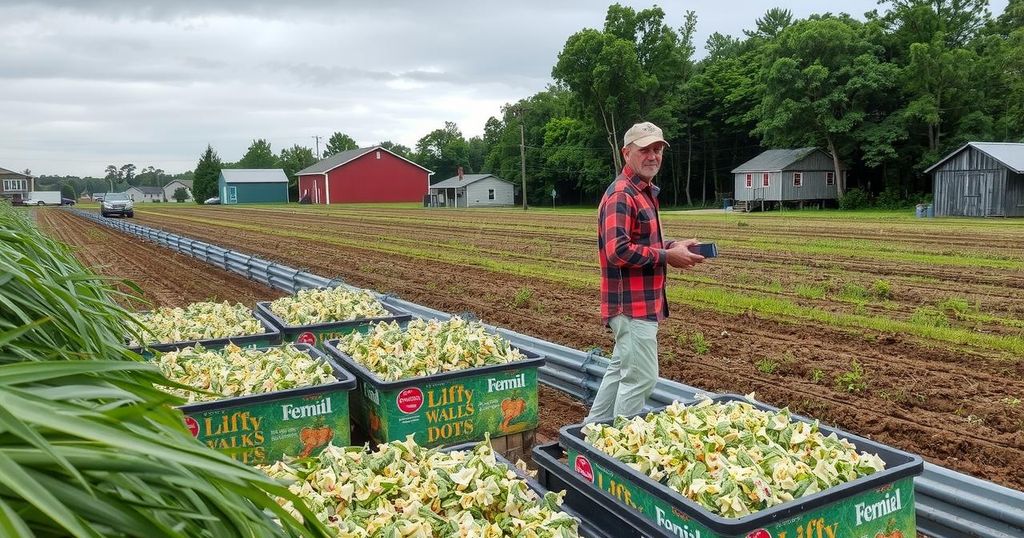Georgia Farmers Reeling from $5.5 Billion Losses After Hurricane Helene
Farmers in Georgia are absorbing the impact of $5.5 billion in losses due to Hurricane Helene, which caused devastating damage to crops, equipment, and poultry facilities. The storm, which made landfall in late September, created significant challenges for farmers starting their fall harvests. With aid from the state and Congress on the horizon, the road to recovery remains fraught with emotional and financial hurdles.
Farmers in Georgia are continuing to deal with significant losses following the devastation caused by Hurricane Helene, which struck the region on September 26 as a powerful Category 4 storm. The hurricane led to extensive damage across agricultural lands, including uprooted crops, damaged machinery, and destroyed poultry houses. Chris Hopkins, a cotton and peanut farmer in Toombs County, lamented the emotional toll of the disaster, expressing uncertainty about whether to rebuild or cease operations altogether.
Initial estimates indicate that Georgia farmers have incurred losses totaling approximately $5.5 billion. The storm’s impact has been felt beyond Georgia, with additional losses reported in North Carolina, Virginia, South Carolina, and Florida. In some areas, cotton growers saw up to half of their crops destroyed, primarily during the critical harvest season. Agricultural experts have voiced concern over the overall economic consequences of the storm, which left many farmers facing overwhelming hardships.
In response to the disaster, the Georgia government has allocated $100 million to provide emergency loans to affected farmers. However, state laws prevent the direct provision of disaster aid to private individuals or businesses. Meanwhile, a recent congressional spending bill has begun to address the broader disaster relief needs for farmers across the nation, emphasizing the urgent need for assistance in the recovery process.
Despite the nearly $700 million hit to Georgia’s poultry industry and the loss of agricultural infrastructure, experts suggest that consumer prices may remain stable due to the availability of crops from alternative sources across the country. However, specific commodities, such as pecans, may face price increases due to their significance in Georgia’s agricultural output.
It remains critical for farmers in Georgia to strategize around recovery from Hurricane Helene as they move forward and work towards rebuilding their livelihoods and infrastructure damaged by the storm.
Hurricane Helene, which made landfall in Florida and subsequently moved through Georgia, has wrought havoc on the agricultural sector. This storm is reported to be one of the deadliest hurricanes in nearly two decades, exacerbating the situation for farmers already struggling with previous economic challenges. The storm’s aftermath has left farms across the Southern United States reeling, with extensive crop destruction and significant financial implications for growers. Affected farmers must navigate the complex process of recovery while contending with limited immediate disaster aid options.
The devastation wrought by Hurricane Helene has left Georgia farmers facing unprecedented challenges, with economic losses estimated at $5.5 billion. As the agricultural community assesses the damage and begins rebuilding, the need for both state and federal assistance remains critical. While there is hope that consumer prices will remain stable due to external supplies, many farmers will continue to struggle with the long-term implications of this disaster on their livelihoods and operations. The collective impact of Helene serves as a stark reminder of the vulnerabilities within the agricultural sector and the importance of timely disaster support.
Original Source: ktxs.com




Post Comment